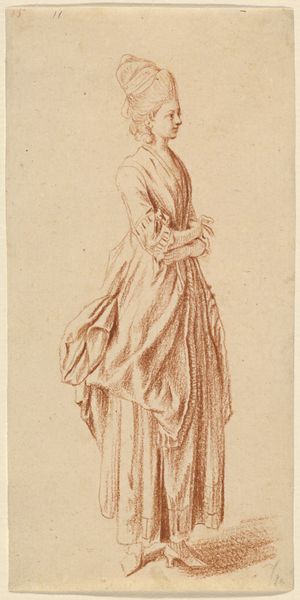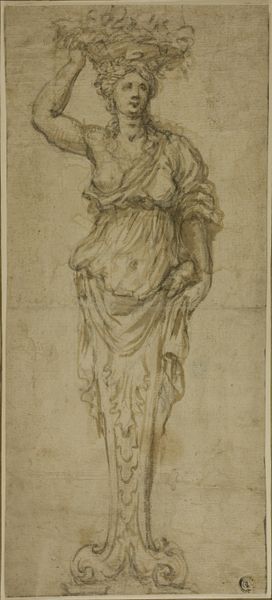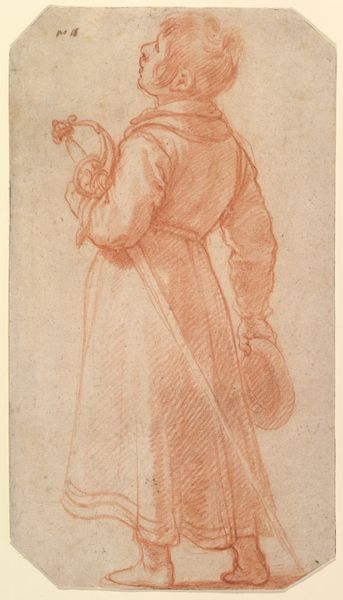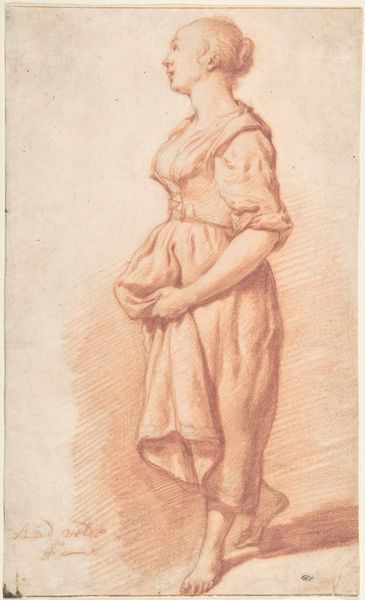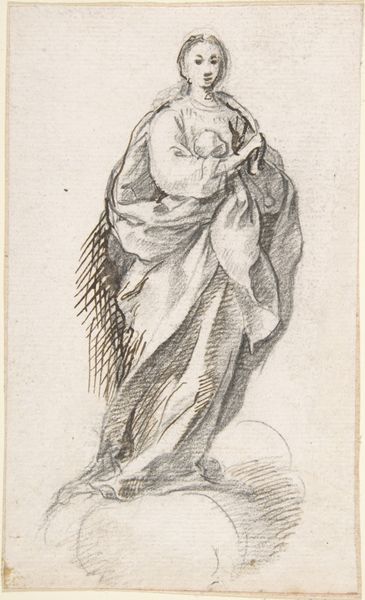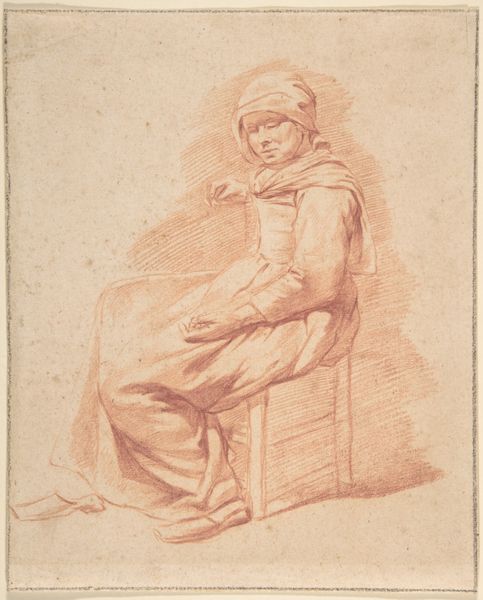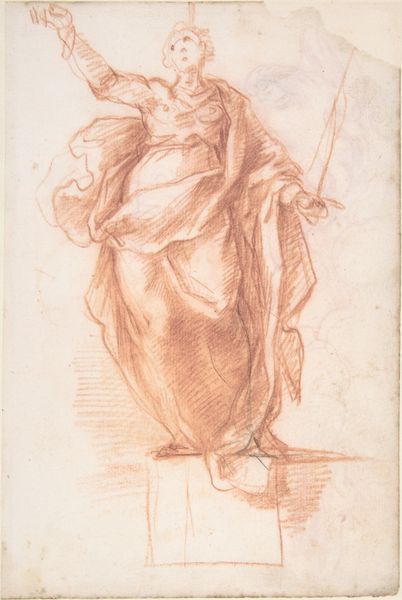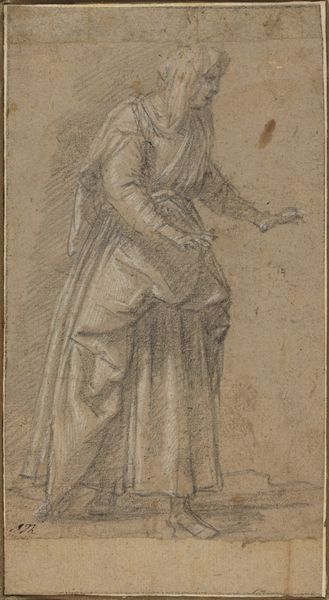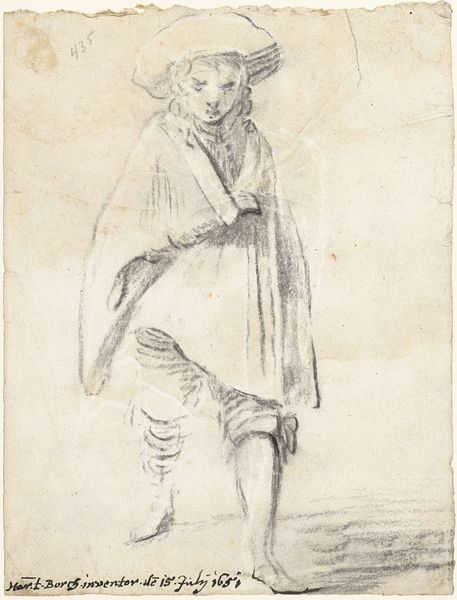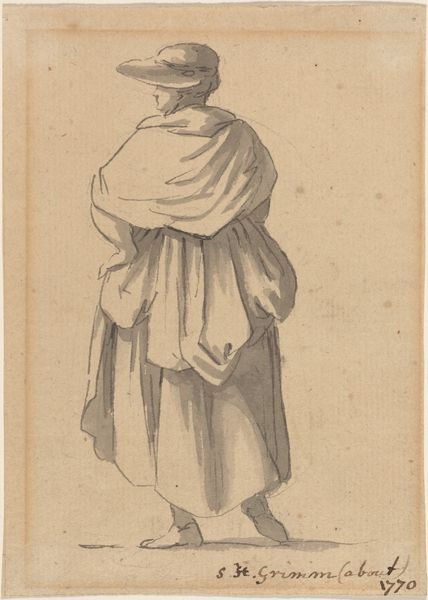
Mit den Füßen im Wasser stehendes Mädchen, den Rock etwas gerafft c. 1771 - 1772
0:00
0:00
drawing, ink, indian-ink
#
pencil drawn
#
drawing
#
amateur sketch
#
toned paper
#
light pencil work
#
quirky sketch
#
pencil sketch
#
personal sketchbook
#
ink
#
german
#
sketch
#
indian-ink
#
15_18th-century
#
sketchbook drawing
#
pencil work
#
sketchbook art
Copyright: Public Domain
Editor: This is "Mit den Füßen im Wasser stehendes Mädchen, den Rock etwas gerafft," or "Girl Standing in Water, Skirt Slightly Raised," by Georg Melchior Kraus, circa 1771-1772. It’s an ink and pencil drawing. I find its sketch-like quality very charming, like a glimpse into the artist's private world. What historical context can you share about Kraus and the role of sketching during this period? Curator: Kraus was active during a fascinating transitional period in German art, moving from the late Baroque to early Neoclassicism. Sketching became increasingly valued not just as preparation for finished works, but as an independent form of artistic expression, reflecting an increased interest in direct observation and personal interpretation of the world. What does the sketch suggest to you about 18th-century social structures and norms around art in a public setting? Editor: I see… It makes me think about who had access to creating and consuming art. Was this kind of casual figure study accessible to a broader audience or mainly for the artist's circle? Curator: That’s a key question. While finished academic paintings were usually commissioned and publicly displayed, drawings and sketches often circulated within a more intimate network of artists and patrons. The informality of the sketch could indicate a certain freedom of expression, or it could reflect limited public access for artists to show and develop art pieces. Given its lack of finishing and tone, is the meaning altered by its likely status as more of a personal expression? Editor: I hadn't considered that its private nature might change our understanding of it. It’s fascinating to think about the layers of context surrounding even a simple sketch. Curator: Precisely! And by viewing it within its socio-cultural context, we get to read beyond the basic form of a girl at the waterside. By acknowledging a piece of art's position as it relates to its society we are able to truly examine and interpret a piece of work. Editor: This has completely changed how I perceive this piece. Thanks for shedding light on that. I think that gives me a much deeper understanding.
Comments
No comments
Be the first to comment and join the conversation on the ultimate creative platform.
